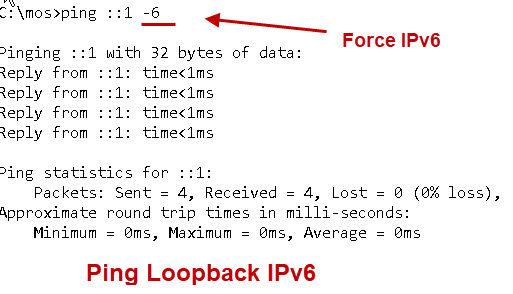Ref: IPv6 Explained for Beginners - suntong/dbab-packer GitHub Wiki
IPv6 Explained for Beginners
http://www.steves-internet-guide.com/ipv6-guide/
IPv6 addresses
An Ipv6 address uses 128 bits as opposed to 32 bits in IPv4.
IPv6 addresses are written using hexadecimal, as opposed to dotted decimal in IPv4. SeeBinary numbers explained
Because an hexadecimal number uses 4 bits this means that an IPv6 address consists of 32 hexadecimal numbers.
These numbers are grouped in 4's giving 8 groups or blocks. The groups are written with a : (colon) as a separator.
group1:group2: ......etc.... :group8
Here is an IPv6 address example:
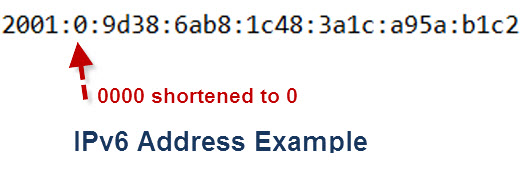
Note: Because of the length of IPv6 addresses variousshortening techniques are employed.
The main technique being to omit repetitive 0's as shown in the example above.
Network And Node Addresses
In IPv4 an address is split into two components a network component and a node component.
This was done initially using Address classes and later using subnet masking.
In IPv6 we do the same. The first step is to split the address into two parts.
The address is split into 2 64 bit segments the top 64 bits is the network part and the lower 64 bits the node part:
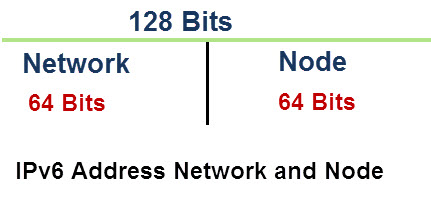
The upper 64 bits are used forrouting.
The lower 64 bits identify the address of the interface or node, and is derived from the actual physical or MAC address using IEEE's Extended Unique Identifier (EUI-64) format. See this Wiki description for exact details.
If we look at the upper 64 bits in more detail we can see that it is split into 2 blocks of 48 and 16 bits respectively the lower 16 bits are used forsubnets on an internal networks, and are controlled by a network administrator.
The upper 48 bits are used for the global network addresses and are for routing over the internet.
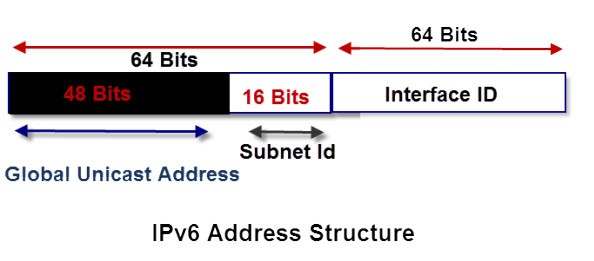
Address Types and Scope
IPv6 addresses have three types:
- Global Unicast Address --Scope Internet- routed on Internet
- Unique Local --- Scope Internal Network or VPN internally routable, but Not routed on Internet
- Link Local -- Scope network link- Not Routed internally or externally.
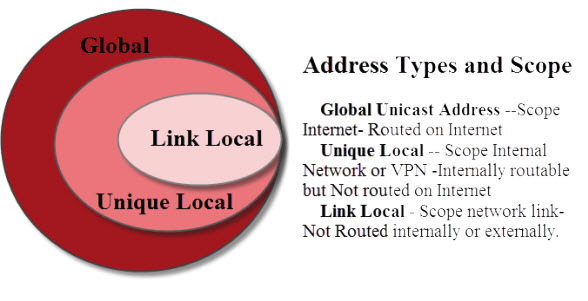
Global and Public Addresses
Global addresses are routable on the internet and start with 2001:
These addresses are known as global Unicast addresses and are the equivalent of the public addresses of IPv4 networks.
The Internet authorities allocate address blocks to ISPs who in turn allocate them to their customers. See Global Address assignments
Internal Addresses- Link Local and Unique Local
In IPv4 internal addresses use the reserved number ranges 10.0.0.0/8, 172.16.0.0/12 and 192.168.0.0/16 and 169.254.0.0/16.
These addresses are not routed on the Internet and are reserved for internal networks.
IPv6 also has two Internal address types.
- Link Local
- Unique Local
Link Local
These are meant to be used inside an internal network, and again they are not routed on the Internet.
It is equivalent to the IPv4 address 169.254.0.0/16 which is allocated on an IPv4 network when no DHCP server is found.
Link local addresses start with fe80
They are restricted to a link and are not routed on the Internal network or the Internet.
Link Local addresses are self assigned i.e. they do not require a DHCP server.
A link local address is required on every IP6 interface even if no routing is present.
Unique Local
Unique Local are meant to be used inside an internal network.
They are routed on the Internal network but not routed on the Internet.
They are equivalent to the IPv4 addresses are 10.0.0.0/8, 172.16.0.0/12 and 192.168.0.0/16
The address space is divided into two /8 spaces: fc00::/8 for globally assigned addressing, and fd00::/8 for locally assigned addressing.
For manually assignment by an organisation use the fd00 prefix.
Using IPv6 Addresses in URLs
On IPv4 networks you can access a network rsource e.g. a web page using the format
However IPv6 addresses contain a colon as separator and so must be enclosed in square brackets.
http://\[IPv6 address]/webpage.
IPv6 Loop Back
The IPv6 loopback address is ::1. You can ping it as follows:
ping ::1
